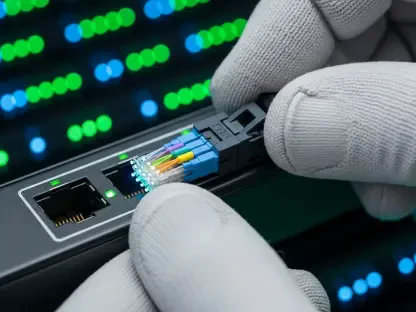In a startling revelation that has sent shockwaves through the telecommunications industry, a massive data breach at Bouygues Telecom, one of France’s leading service providers, has compromised the personal information of approximately 6.4 million customers. This incident, which recently came to light, highlights the ever-present and escalating dangers of cyber threats in a sector that handles vast amounts of sensitive data. Malicious actors reportedly exploited vulnerabilities in the company’s network infrastructure, gaining unauthorized access to a trove of personal details. The scale of this breach not only raises serious concerns about data security but also underscores the urgent need for robust protective measures in an era where digital information is both a valuable asset and a prime target. As details continue to emerge, the focus shifts to understanding the depth of the compromise, the response strategies employed, and the broader implications for the industry at large, setting the stage for a critical examination of cybersecurity in telecom.
Uncovering the Cyberattack Details
The breach at Bouygues Telecom appears to have stemmed from sophisticated methods employed by cybercriminals to penetrate the company’s systems. Experts suggest that techniques such as SQL injection or credential stuffing may have been used to exploit weaknesses in the network infrastructure, allowing unauthorized access to a database containing millions of customer records. The compromised information likely includes names, contact details, and possibly billing records, although the full scope remains under wraps to avoid further exploitation. This incident is a stark reminder of how even large, established companies can fall victim to persistent and evolving cyber threats. Telecom firms, with their extensive data repositories, are prime targets for attackers seeking to profit from stolen information through dark web sales or identity theft schemes. The breach’s discovery has sparked intense scrutiny of the security protocols in place at the time of the attack, raising questions about whether adequate defenses were implemented to safeguard such critical information.
Further investigation into the breach reveals the alarming speed and efficiency with which attackers operated. Once inside the system, the intruders likely navigated through layers of data with relative ease, exploiting gaps in monitoring or outdated security patches. While Bouygues Telecom has not disclosed specific entry points to prevent copycat attacks, the incident reflects a broader trend of increasing sophistication in cybercrime targeting the telecom sector. The potential fallout from such a breach extends beyond immediate data loss, as stolen information can fuel phishing campaigns or other fraudulent activities for months or even years. This situation emphasizes the critical importance of proactive threat detection and the need for continuous updates to security frameworks. As cybercriminals refine their tactics, companies must stay ahead by adopting cutting-edge technologies and ensuring that vulnerabilities are addressed before they can be exploited on such a massive scale.
Response and Mitigation Efforts
In the wake of the breach, Bouygues Telecom acted swiftly to contain the damage and secure its systems against further intrusion. The company’s incident response team employed advanced forensic analysis and intrusion detection tools to isolate affected servers and halt unauthorized access. Technical measures, including patching known vulnerabilities, enhancing firewall configurations, and rolling out multi-factor authentication across platforms, were prioritized to fortify defenses. Additionally, a comprehensive system-wide audit using endpoint detection and response (EDR) tools was conducted to ensure no residual malware or backdoors lingered in the network. These actions align with industry best practices, such as those outlined in the NIST Cybersecurity Framework, which stress rapid containment to minimize data loss and operational disruption. The response demonstrates a commitment to addressing the immediate threat, though it also highlights the challenges of maintaining airtight security in a complex digital environment.
Beyond technical fixes, Bouygues Telecom took steps to address the human element of the crisis by focusing on transparency and communication. Affected customers were notified through email and text messages, receiving guidance on protective actions such as updating passwords, monitoring account activity, and utilizing credit monitoring services to detect potential fraud. Dedicated hotlines and online resources were also established to assist individuals in securing their personal devices against secondary threats like spear-phishing. This customer-centric approach aims to mitigate the reputational damage often associated with data breaches, especially in competitive markets where trust is paramount. While these efforts are commendable, they also underscore the long road ahead in rebuilding confidence among users who may feel vulnerable following such a significant exposure of their personal information. The balance between technical recovery and customer support remains a critical focus in the aftermath.
Regulatory Compliance and Legal Actions
Under the stringent requirements of the General Data Protection Regulation (GDPR), Bouygues Telecom promptly reported the breach to France’s data protection authority, the National Commission for Information Technology and Civil Liberties (CNIL). The detailed report outlined the nature and scope of the incident, along with the remedial steps taken to address it. Compliance with GDPR is non-negotiable, as failure to adhere to these standards could result in substantial fines, potentially up to 4% of the company’s global annual turnover. This regulatory oversight serves as a critical mechanism to ensure accountability and protect consumer rights in the face of data breaches. The company’s adherence to these protocols not only fulfills legal obligations but also sets a precedent for transparency in handling such crises. The involvement of regulatory bodies underscores the broader societal impact of cyber incidents, pushing for stricter enforcement and higher standards across the industry.
In addition to regulatory notifications, Bouygues Telecom filed a formal complaint with judicial authorities, triggering a criminal investigation into the breach. This process may involve collaboration with the French National Police’s cybercrime unit to trace the origins of the attack and identify the perpetrators. Such legal actions contribute to wider efforts to combat transnational cyber threats through intelligence sharing and coordinated responses. The pursuit of justice in this case sends a strong message about the seriousness with which data breaches are treated, both from a corporate and governmental perspective. While the investigation unfolds, the potential for international cooperation highlights the global nature of cybercrime, where borders are irrelevant to attackers. This legal dimension adds another layer of complexity to the response strategy, emphasizing that technical solutions alone are insufficient without robust legal frameworks to deter future attacks and hold culprits accountable.
Industry-Wide Implications and Future Outlook
The breach at Bouygues Telecom serves as a sobering wake-up call for the entire telecommunications industry, which continues to be a magnet for cybercriminals due to the sheer volume of sensitive data it manages. Industry analysts argue that this incident underscores the urgent need for providers to invest in advanced security solutions, such as zero-trust architectures and AI-driven threat intelligence, to proactively identify and neutralize risks before they escalate. The trend of escalating cyber threats in this sector is not new, but the scale of this particular breach amplifies the call for continuous improvement in cybersecurity defenses. As telecom companies balance operational demands with the imperative to protect user information, the adoption of innovative technologies becomes non-negotiable. This event may prompt competitors to reassess their own vulnerabilities, potentially driving a wave of industry-wide upgrades to prevent similar incidents from occurring.
Looking ahead, the broader narrative around this breach emphasizes sustained vigilance by all stakeholders, from corporate leaders to individual customers. While no concrete evidence of ongoing data misuse has surfaced, the potential for long-term consequences remains a pressing concern. The telecom sector must prioritize not only reactive measures but also predictive strategies that anticipate emerging threats. Collaboration between companies, regulators, and cybersecurity experts will be essential to establish a fortified front against digital adversaries. The lessons drawn from this incident could shape future policies and practices, ensuring that data protection evolves in tandem with technological advancements. As the industry reflects on this breach, the focus must remain on fostering resilience through innovation, transparency, and a commitment to safeguarding the trust of millions who rely on these services daily.
Lessons Learned and Path Forward
Reflecting on the aftermath, the cyberattack on Bouygues Telecom revealed critical gaps in network security that allowed the exposure of millions of customer records. The rapid response, including containment measures and regulatory compliance, helped limit further damage and demonstrated accountability. Notifications to affected individuals and the provision of support resources also played a key role in addressing immediate concerns. However, the incident echoed a persistent challenge within the telecom sector: the need to stay ahead of increasingly sophisticated threats. Each step taken by the company in the wake of the breach contributed to a broader understanding of how such crises can be managed effectively under pressure.
Moving forward, the emphasis must shift toward preemptive action and long-term solutions. Telecom providers should consider integrating next-generation security tools and fostering a culture of continuous improvement to close vulnerabilities before they are exploited. Partnerships with cybersecurity firms and adherence to evolving global standards will be crucial in building stronger defenses. Additionally, educating customers about safeguarding their data can create a shared responsibility model, enhancing overall security. This breach, while a significant setback, offered valuable insights that can drive meaningful change, ensuring that the industry adapts and thrives in an increasingly digital landscape.









